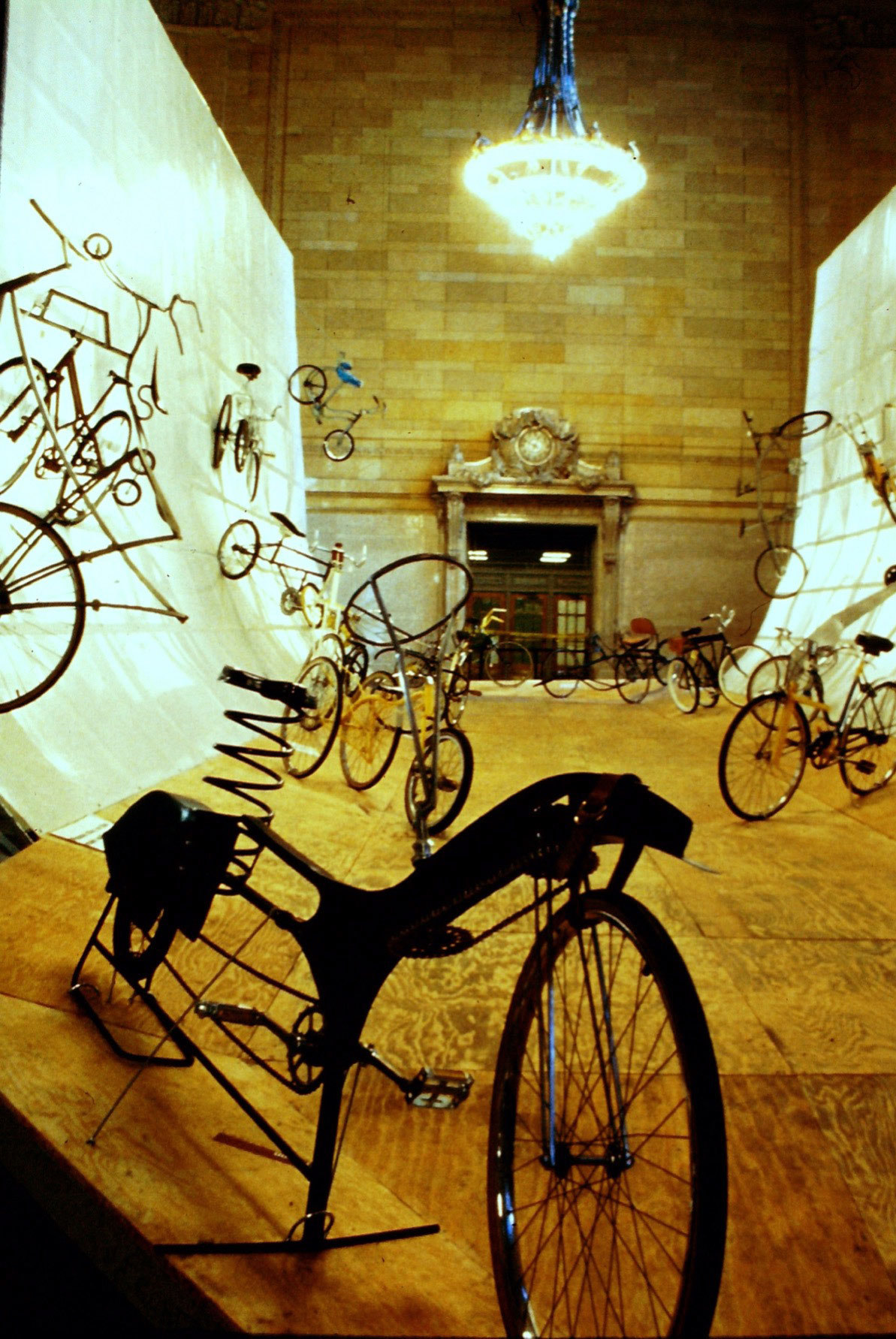SCI-Arc 50th—Community on the Cutting-Edge: A Historical Perspective on SCI-Arc’s Renowned Fabrication Shop
Written by Frances Lazare
From its inception 50 years ago, The Southern California Institute of Architecture (SCI-Arc) proposed the pedagogical value of student-led self-study within a responsive, and minimally administered educational environment. The ambitions of founder Ray Kappe to promote an open-system, wholly collaborative “college without walls” were nothing short of utopian, necessitated almost immediate revision, and can be understood in relation to new architectural theories that rejected the hyper functionalism of the post-war years. Indeed, the novel pedagogical ideas proffered by Kappe and his colleagues in 1972 were but one part of a live, multidisciplinary conversation about the future of design. If the theoretical aspects of these ideas took time to put into words—as evidenced by shifting language in course catalogs published between 1972 and 1975—there was one primary site where SCI-Arc’s participatory philosophy took practical form, namely its fabrication shop. From its beginnings as a small-scale woodshop to its current status as a world-class fabrication center, SCI-Arc’s “Shop” remains the beating heart of the institution.
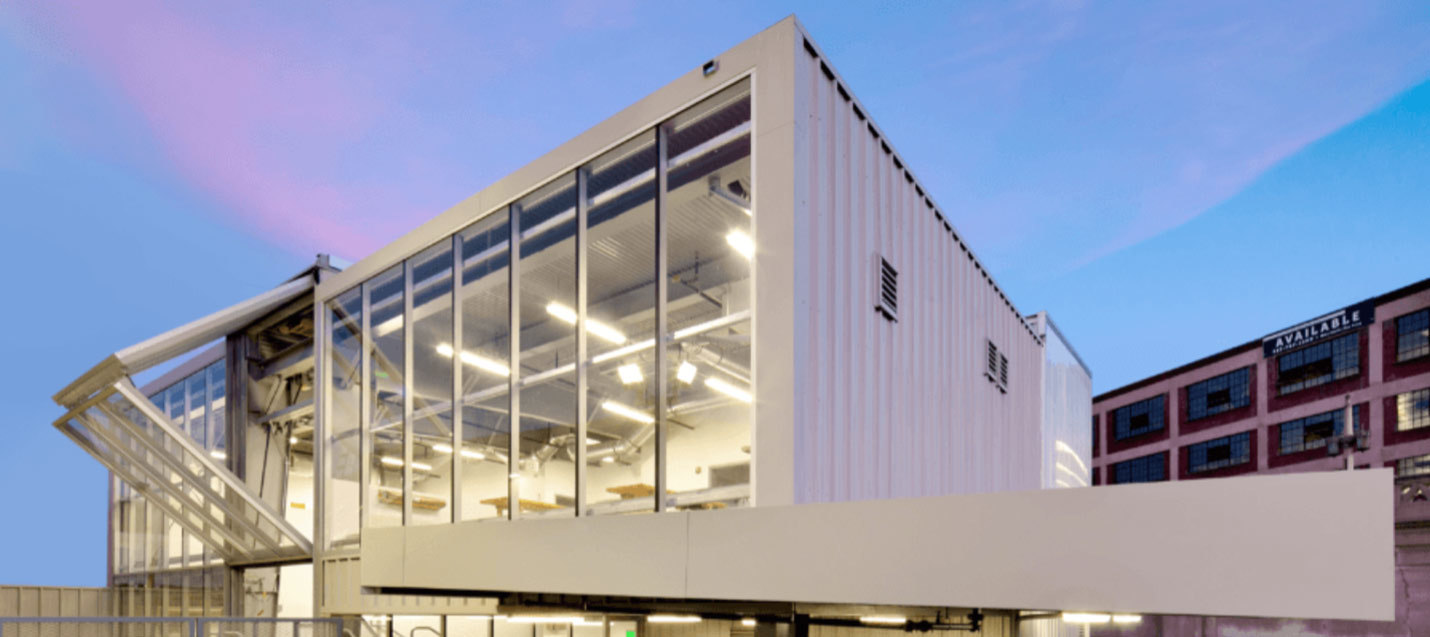
SCI-Arc Magic Box.
A flyer advertising SCI-Arc’s 1979 summer session bespeaks the foundational importance of the shop from the school’s earliest years. That summer session was particularly focused around the school’s new career discovery program, aimed at “giving people with an interest in design a clear picture of architectural education and the practice of architecture and related specialties before they make a commitment in the field.” Days were organized into two parts: lectures and field trips in the morning, and sessions in the woodshop in the afternoon. According to the flyer, these shop sessions brought the principles introduced in morning lectures to life, as students honed their “conceptual design and graphic abilities through drawing, model building and dialogue.”[1]
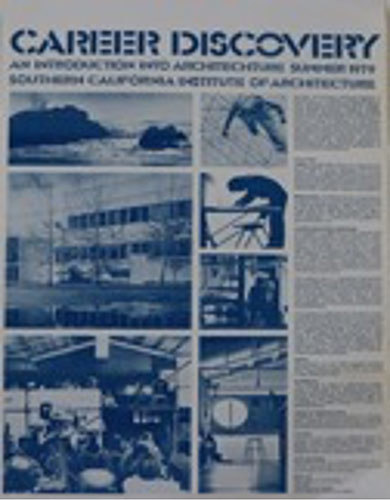
Summer Session 1979 Flyer, SCI-Arc institutional archives.
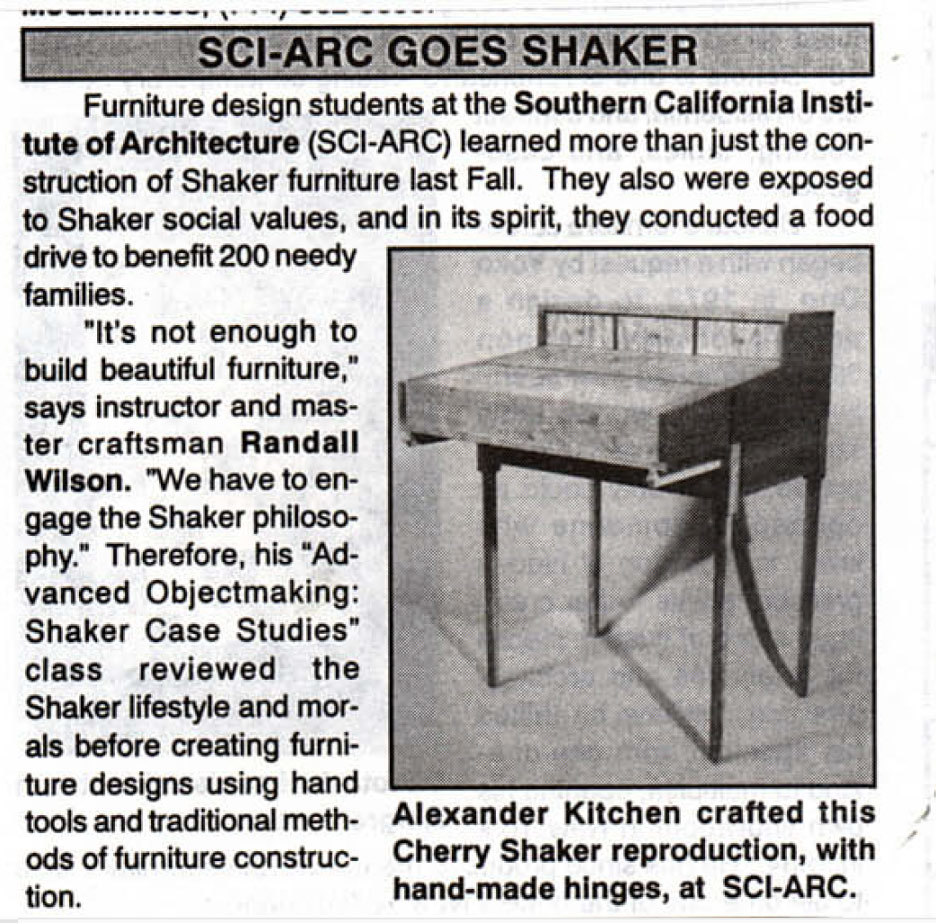
SCI-Arc Goes Shaker.” Woodworker West (March- April 1995).
The guiding principles of “learning by doing” and indeed, as specified by this early document, by dialogue have remained key throughout the shop’s many iterations. While early curriculum was largely unwritten, student accounts recall that each semester, shop activity was determined around a core concept that guided design thinking. Core concepts might be as simple (at least seemingly) as “metal versus wood,” or as nuanced as “requirements of basic shelter.” The goal was for students to translate the core concepts into a physical environment that reflected the discoveries of their research—using the resources available within fabrication shop.
These commitments were formalized under the aegis of Randall Wilson, who joined SCI-Arc as director of the fabrication shop in 1986. Wilson’s work as shop-master and instructor of Visual Studies, was guided by the conviction that design innovation is wholly inseparable from social engagement, and thus inseparable from public service. Take for instance Wilson’s furniture design course, Advanced Object Making: Shaker Case Studies. Of the social ambitions of the course Wilson stated, “It’s not enough to build beautiful furniture. We must engage the Shaker Philosophies.” In this vein, Wilson’s advanced object making students reviewed Shaker lifestyle and morals—which valued honestly, frugality, and truth to materials—before creating their own furniture in the fabrication studio using hand tools and traditional methods, as well as conducting a food drive for over 200 families as the course’s culminating activity.[2]
Indeed, Wilson brought his expertise as a master craftsman and the activist engagement of the fabrication shop far and beyond campus. Wilson formalized the activist commitments of the SCI-Arc Shop in 1991 via the foundation of the City, Practice & Research Center, renamed Blue Soup in 2001.[3] The initiative provided multidisciplinary design services to local communities in and around Los Angeles, by designing and building critically needed projects—such as housing for the homeless—via mentorship, training, and collaboration.[4]
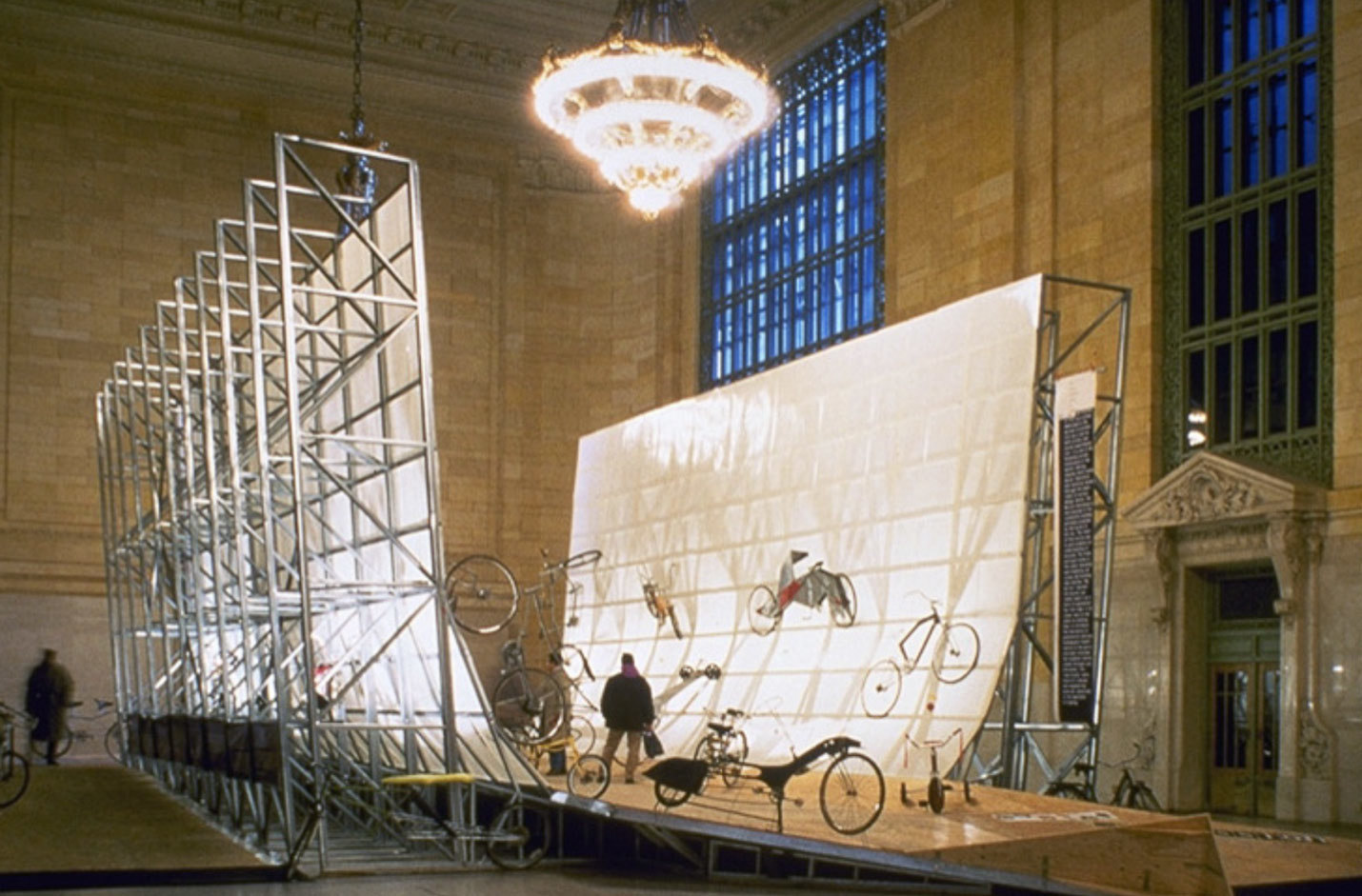
SCI-Arc Cycles of Expression, Grand Central Terminal, New York City NY, 1995.
Blue Soup’s 1995 initiative “Cycles of Expression” was particularly memorable. The initiative began as a course, composed of architecture students from SCI-Arc as well as young adults from across Los Angeles who received their tuition free, and was centered around the core concept of re-use. Materials for the course were sourced from yard sales and swap meets across Los Angeles. Working under the supervision of Wilson and his studio assistants within the fabrication shop, students learned the metalworking skills necessary to dismantle and remake discarded bicycles according to their own design. Creativity was encouraged and results were bound by one requirement: that each bike be a functional object.[5]
An exhibition of 32 of the born-again bicycles opened shortly thereafter at Grand Central Terminal in New York City, bringing the students' work to new and broader audiences. The exhibit consisted of a plywood walkway between two glowing backdrops, designed by SCI-Arc faculty members Danelle Guthrie and Tom Buresh,[6] festooned with the eccentric vehicles that sported fur-covered handlebars, lace-trimmed seats, and sporting multiple wheels—their parts appropriated from sources as varied as farm equipment and wet suits.[7] In spite their fanciful appearance and artful presentation, the vehicles maintained their status as usable objects. "Some ride like wild animals," said Wilson, "but all are ridable."[8]
Following Wilson’s departure in 2003, the shop operated under the capable guidance of shop-masters Katsumi Moroi, Jeff McKibbon, and current head of the fabrication studio Rodney Rojas. Over the past two decades, the fabrication shop has expanded considerably as its leaders have adapted to the rapid changes wrought by the digital revolution, but remains at the very heart of SCI-Arc’s activity, shaped by the principles of learning by doing.
In 2013, the Shop underwent its most dramatic transition to date, when construction began on the four-thousand-square-foot, two-story digital fabrication studio lovingly known as “The Magic Box.” Completed two years later, the Magic Box now houses a plethora of 3D scanners, clear plastic and paper 3D printers, as well as several new laser-cutters and CNC machines and is one of the most advanced fabrication facilities at an architecture school. Concomitant to these digital advances, the Shop simultaneously solidified its commitment to analog fabrication. The analog space underwent a renovation of its own, with the goal of creating a more open concept space that encouraged the kind of collaboration and sociability at SCI-Arc’s core. The spaces—digital and analog—work in tandem with one another to help students achieve their design ambitions and Rojas sees the two modes of fabrication as necessarily linked.
Rojas also stresses that, while the shop may make headlines less often than it did during Wilson’s tenure, the activist commitments of the fabrication studio remain. These commitments have looked different over the past decade, as the school diversified and expanded its student body. Meeting the individual, localized needs of every one of these students now shapes the activities of the fabrication shop. “We never tell students no,” Rojas stresses, “I encourage flights of fancy. I never stop a project, even if I know the design is unlikely to pan out.” If a student is going to fail in a design, it’s a learning experience, and Rojas and his staff are along for the ride. As ever, the Shop’s participatory and convivial environment encourage a kind of engaged learning that—arguably as much as the studio’s state of the art equipment—draw students from all over the world.[9]
[1] “Career Discovery: An Introduction into Architecture Summer 1979.” SCI-Arc institutional archives.
[2] “SCI-Arc Goes Shaker.” Woodworker West (March- April 1995).
[3] Pearson, Jason, ed. University-Community Design Partnerships: Innovations in Practice. NEA Series on Design. Washington: National Endowment for the Arts with the support of The Richard H. Driehaus Foundation. Distributed by Princeton Architectural Press, 2002. Pg. 35.
[4] Liptak, Vic. “Randall Wilson: Practicing Creativity While Building Community.” In Elizabeth Martin, ed. City Works Los Angeles: Handbook. Los Angeles, Ram Distribution, 2005. Pgs. 84- 87.
[5] Finch, Liz. “Bike workshop a tandem ride for community, SCI-Arc.” The Argonaut (August 25, 1994), pg. 20.
[6] Brochure for “Cycles of Expression,” 1995.
[7] Milne, Victoria. “Planes and Trains.” Village Voice (February 21, 1995).
[8] Dullea, Georgia. “Bicycles with Attitude.” New York Times (January 21, 1995).
[9] All quotes from Interview with Rodney Rojas by author. March 15, 2022.
Frances Lazare is currently a doctoral student in the Department of Art History at the University of Southern California. Her work investigates the history and theory of painting and abstraction, with particular focus on practice and discourse in the post-War United States. Prior to joining USC, she worked as an assistant in the curatorial department at the Menil Collection, Houston, where she assisted on an exhibition and symposium examining the late work of American painter Barnett Newman, among other projects. She holds a BA with distinction in the history of art from Smith College.
